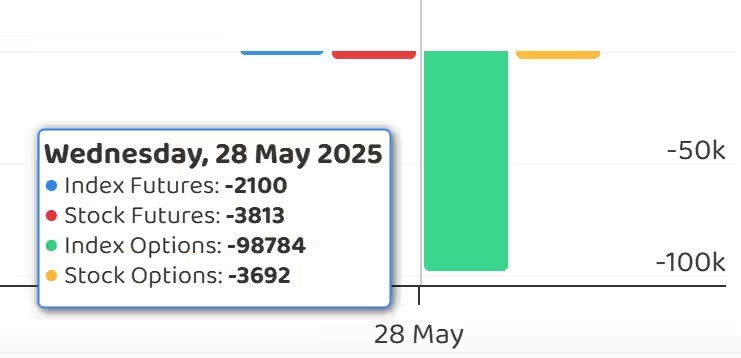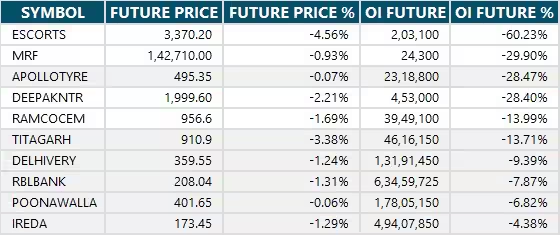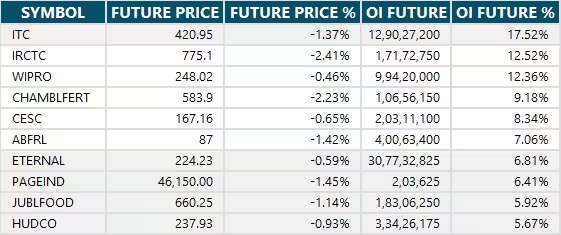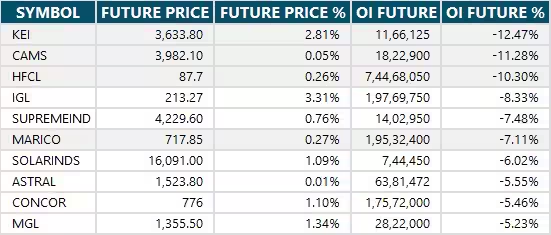29 May , 2025 By : Debdeep Gupta

The Nifty 50 extended its losses for the second consecutive session, falling by a third of a percent amid rangebound trading on May 28. The index has broadly been trading in the range of 24,500–25,100 for the last couple of weeks. Until the index decisively breaks either side of this range, consolidation is expected to continue in the short term. In the upcoming session, the monthly F&O expiry day, if the index falls and sustains below 24,700, a downward move toward 24,500–24,450 is possible. However, a decisive close above 24,850 could drive the index toward the recent swing high (25,116), according to experts.
Here are 15 data points we have collated to help you spot profitable trades:
1) Key Levels For The Nifty 50 (24,752)
Resistance based on pivot points: 24,833, 24,863, and 24,912
Support based on pivot points: 24,736, 24,706, and 24,657
Special Formation: The Nifty 50 traded within the previous day's range and formed a bearish candle on the daily charts, with a lower highs-lower lows formation, indicating consolidation. The index closed below the 10-day EMA, and the trading volume was the highest since November 25 last year. The RSI at 56.05 tilted downward for another session, while the MACD remained well above the zero line, though there was a negative crossover with a weakening histogram.
2) Key Levels For The Bank Nifty (55,417)
Resistance based on pivot points: 55,501, 55,568, and 55,678
Support based on pivot points: 55,282, 55,215, and 55,105
Resistance based on Fibonacci retracement: 56,307, 58,648
Support based on Fibonacci retracement: 54,117, 52,892
Special Formation: The Bank Nifty remained in a narrow range for a couple of weeks, rising 64 points and forming a small bullish candle on the daily timeframe. It still held above all key moving averages (10, 20, 50, and 200-day EMAs) and the midline of the Bollinger Bands. The RSI at 59.06 gave a positive crossover, while the MACD maintained its position well above the zero line, despite being in a negative crossover.
3) Nifty Call Options Data
According to the monthly options data, the 25,500 strike holds the maximum Call open interest (with 1.28 crore contracts). This level can act as a key resistance for the Nifty in the short term. It was followed by the 25,000 strike (1.27 crore contracts), and the 25,800 strike (97.72 lakh contracts).
Maximum Call writing was observed at the 25,500 strike, which saw an addition of 30.31 lakh contracts, followed by the 24,800 and 24,750 strikes, which added 24.09 lakh and 21.77 lakh contracts, respectively. The maximum Call unwinding was seen at the 25,400 strike, which shed 3.63 lakh contracts, followed by the 24,500 and 25,200 strikes, which shed 2.16 lakh and 2.15 lakh contracts, respectively.
4) Nifty Put Options Data
On the Put side, the maximum Put open interest was seen at the 24,000 strike (with 1.15 crore contracts), which can act as a key support level for the Nifty. It was followed by the 24,500 strike (77.03 lakh contracts) and the 24,800 strike (74.15 lakh contracts).
The maximum Put writing was placed at the 24,750 strike, which saw an addition of 24.2 lakh contracts, followed by the 24,650 and 24,450 strikes, which added 9.22 lakh and 8.2 lakh contracts, respectively. The Put unwinding was seen at the 24,200 strike, which shed 35.42 lakh contracts, followed by the 24,400 and 25,000 strikes which shed 15.57 lakh and 14.01 lakh contracts, respectively.
5) Bank Nifty Call Options Data
According to the monthly options data, the 57,000 strike holds the maximum Call open interest, with 17.43 lakh contracts. This can act as a key resistance level for the index in the short term. It was followed by the 56,000 strike (16.63 lakh contracts) and the 55,500 strike (15.12 lakh contracts).
Maximum Call writing was visible at the 57,000 strike (with the addition of 2.42 lakh contracts), followed by the 55,400 strike (1.57 lakh contracts), and the 57,100 strike (1.32 lakh contracts). The maximum Call unwinding was seen at the 55,000 strike, which shed 1.18 lakh contracts, followed by the 56,500 and 54,000 strikes, which shed 66,030 and 55,290 contracts, respectively.
6) Bank Nifty Put Options Data
On the Put side, the maximum Put open interest was seen at the 55,000 strike (with 14.22 lakh contracts), which can act as a key support level for the index. This was followed by the 54,000 strike (13.41 lakh contracts) and the 55,500 strike (12.36 lakh contracts).
The maximum Put writing was observed at the 55,400 strike (which added 1.73 lakh contracts), followed by the 55,300 strike (1.52 lakh contracts) and the 54,600 strike (1.38 lakh contracts). The maximum Put unwinding was seen at the 55,500 strike, which shed 1.89 lakh contracts, followed by the 56,000 and 55,000 strikes, which shed 1.37 lakh and 1.29 lakh contracts, respectively.
7) Funds Flow (Rs crore)

8) Put-Call Ratio
The Nifty Put-Call ratio (PCR), which indicates the mood of the market, fell further to 0.76 on May 28, from 0.82 in the previous session.
The increasing PCR, or being higher than 0.7 or surpassing 1, means traders are selling more Put options than Call options, which generally indicates the firming up of a bullish sentiment in the market. If the ratio falls below 0.7 or moves towards 0.5, then it indicates selling in Calls is higher than selling in Puts, reflecting a bearish mood in the market.
9) India VIX
The India VIX, the fear index, continued to remain at elevated levels despite Wednesday's correction, signaling caution for Nifty bulls. It fell 2.79 percent to 18.02 levels.
10) Long Build-up (39 Stocks)
A long build-up was seen in 39 stocks. An increase in open interest (OI) and price indicates a build-up of long positions.

11) Long Unwinding (69 Stocks)
69 stocks saw a decline in open interest (OI) along with a fall in price, indicating long unwinding.

12) Short Build-up (72 Stocks)
72 stocks saw an increase in OI along with a fall in price, indicating a build-up of short positions.

13) Short-Covering (40 Stocks)
40 stocks saw short-covering, meaning a decrease in OI, along with a price increase.

14) High Delivery Trades
Here are the stocks that saw a high share of delivery trades. A high share of delivery reflects investing (as opposed to trading) interest in a stock.

15) Stocks Under F&O Ban
Securities banned under the F&O segment include companies where derivative contracts cross 95 percent of the market-wide position limit.
Stocks added to F&O ban: Nil
Stocks retained in F&O ban: Nil
Stocks removed from F&O ban: RBL Bank
0 Comment